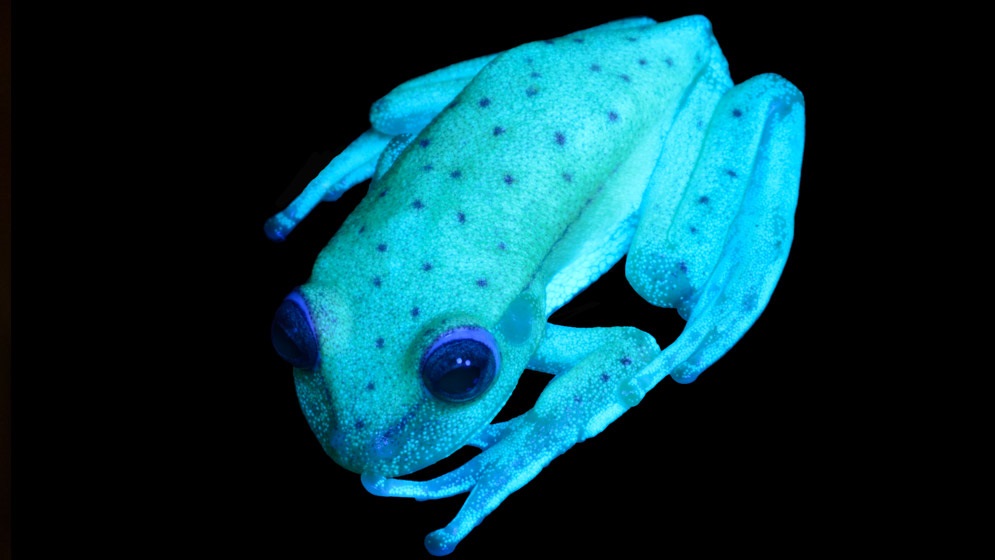Media Release
From: Springer NatureBiofluorescence, where organisms emit a fluorescent glow after absorbing light energy, may be widespread in amphibians including salamanders and frogs, according to a study in Scientific Reports. Biofluorescence had previously been observed in only one salamander and three frog species.
Jennifer Lamb and Matthew Davis exposed one to five individuals from 32 amphibian species to blue or ultra-violet light and measured the wavelengths of light emitted by the animals using spectrometry. The authors found that all species examined were biofluorescent, although the patterns of fluorescence differed substantially between species ranging from fluorescent blotches and stripes to fluorescent bones or all-over fluorescence.
The authors suggest that biofluorescence may enable amphibians to locate each other in low-light conditions as their eyes contain rod cells that are sensitive to green or blue light. Biofluorescence may create more contrast between amphibians and their environment, allowing them to be more easily detected by other amphibians. It could also aid amphibians in camouflage, predator mimicry or mate choice, as has been observed in other biofluorescent species.
Mechanisms underlying biofluorescence may include the presence of fluorescent proteins and compounds in skin, secretions and bones or may relate to the chemical and structural composition of some amphibians’ chromatophores (pigment-containing and light-reflecting cells), according to the authors.
The findings suggest that ancestors of modern amphibians were able to biofluoresce, resulting in the phenomenon being widespread among amphibians alive today.


